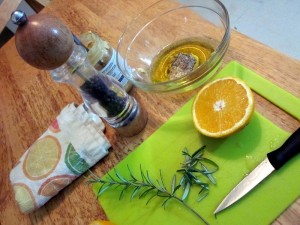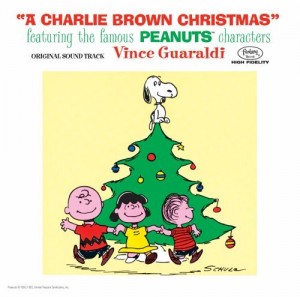 Looking back at my formative years in Southeastern Ontario, I’ve realized how many of my memories of Christmas smell like cloves and taste like pig. My mom’s Christmas ham was a beautiful beast. An un-apologetic 1950’s-syle mountain of honey-glazed pork covered in glowing orange slices shot through with cloves. The table would groan under the weight of the unwieldy thing, and our stomachs would groan with anticipation as it was carved.
Looking back at my formative years in Southeastern Ontario, I’ve realized how many of my memories of Christmas smell like cloves and taste like pig. My mom’s Christmas ham was a beautiful beast. An un-apologetic 1950’s-syle mountain of honey-glazed pork covered in glowing orange slices shot through with cloves. The table would groan under the weight of the unwieldy thing, and our stomachs would groan with anticipation as it was carved.
I’m not the only one who dreams of smoked pig legs instead of sugar plums. In fact, eating pigs during the yuletide season goes all the way back to medieval Norse/Germanic traditions:
“…tradition [that] was initiated in all probability on the Isle of Britain by the Anglo-Saxons, although our knowledge of it comes substantially from medieval times….[In ancient Norse tradition] sacrifice carried the intent of imploring Freyr to show favor to the new year. The boar’s head with apple in mouth was carried into the banquet hall on a gold or silver dish to the sounds of trumpets and the songs of minstrels.”
– James E. Spears (Folklore Vol. 85, scooped off of Wikipedia)
Alright, so before we get on with the cooking, we have to figure out what kind of ham we are dealing with, and that depends on what’s available to you where you live. If you have a Megalomart in your town, chances are you can get fully-cooked smoked or salted hams. If you have a neighbourhood butcher in your hamlet (lucky you, give him or her a big hug for Christmas) you have access to artisanal partially-cured hams that need a little more ‘lovin before it’s dinner. Lets see what’s in the meat section shall we?
Raw Pork Leg – Sorry, but this isn’t going to be ready for Christmas dinner. Ham must be cured either by salting or smoking to make it “Ham”. Maybe I’ll do a post about making ham from scratch sometime after Christmas, but for now we’ll move on and grab something else.
Fresh Ham – The next stage up from raw is a “fresh” ham. This is a leg that has only been lightly cured with salt, and is still raw inside. To get this ham ready for the oven it must be soaked in water overnight to remove the excess saltiness. Once dried, the ham can be simmered for an hour and a half in a large, covered stock pot with aromatics to cook it through. Phew… Half way there!
Country Ham – These hams are dry-cured, then smoked and aged for extra flavor. They can be either fully cooked or half-cooked like the Fresh Ham. Check the label or ask your butcher to find out which one. Most likely you will be able to cook it right away without any prep, but some may need a soaking (see above). The broad term of “country” ham is frequently applied to any number of unique cured pork leg products from around the world.
City Ham – The most common type of ham at the supermarket. City ham is soaked in brine (or injected with it) and then boiled or lightly smoked. It is a fully cooked ham, and requires no processing. Just heat and serve!
So keep your eye on the labels and choose which ham is right for you. If you have a couple days available, you might want to follow through the process of soaking and simmering a fresh ham. If you’ve only got a couple of hours, buy a fully cooked ham, rub it down and heat it up. They’ve all got slightly different flavours (and levels of saltiness) so experiment to find your favourite. Just avoid any “maple” flavoured hams… They always taste bad.
Holiday Ham (Makes enough ham to feed a crowd with lots of leftovers)
 Ingredients
Ingredients
• 3.7kg (8.2 lbs.) Bone-In Fully cooked Ham
• 3 tbls. (30ml) Olive Oil
• 2 tbls. Dijon Mustard
• 2 tps. Cracked Black Pepper
• 1 tps. Ground Allspice
• 3 Medium-sized Mandarin Oranges
• 3 Big Sprigs ‘o Fresh Rosemary
Method
(Set your oven to 300˚F or 150˚C)
1. Grab a sharp knife and trim any excess fat from around the outside edge of the ham, not too much, just any big globulus bits. Score the surface all over in a checkerboard fashion. This will not only make the finished ham look freakin cool, but also allow for more of the glaze and heat to penetrate into the meat.
2. Mix the oil, mustard, spices, the juice from one of the oranges, and 1 ½ tbls. of the fresh rosemary (chopped). Save the Rosemary stalks, we’ll be using those later. Whisk ingredients together in a small bowl until they’re well mixed and have the texture of a salad dressing. Rub half of this mixture all over the ham, making sure to get it in all those little checkerboard valleys. Place the ham into an oiled roasting pan and fire it into the oven for 1 ½ hours.
3. Remove the ham from oven (doesn’t the kitchen smell nice?) and rub the remaining half of the mixture in just as before. Slice the two remaining mandarin oranges into thin rounds (about ¼ of an inch) and cut the remaining rosemary stalks into inch long spears. Give each of the rosemary spears a sharp point by clipping the end with your knife at an angle. Now skewer each orange slice with a rosemary spear onto the ham, and push it in far enough to keep it from falling off during the rest of the cooking process. Once the ham is armoured in oranges and rosemary, put it back in the oven for 1 ½ hours.
4. Get the ham out of the oven, and onto a carving platter, cover with tin foil and let rest 20 mins before cutting into it. Make sure to remove all the rosemary spears, or someone might get a nasty surprise! Slice ham into thin rounds and serve with Dijon mustard.
Optional : you can toss some thickly cut veg into the roasting pan along with the ham and they’ll slowly cook and absorb all that hamy goodness. I went for onions, carrots, parsnips, and peas but anything goes really.
 Music To Cook This To
Music To Cook This To
Vince Guaraldi Trio – A Charlie Brown Christmas